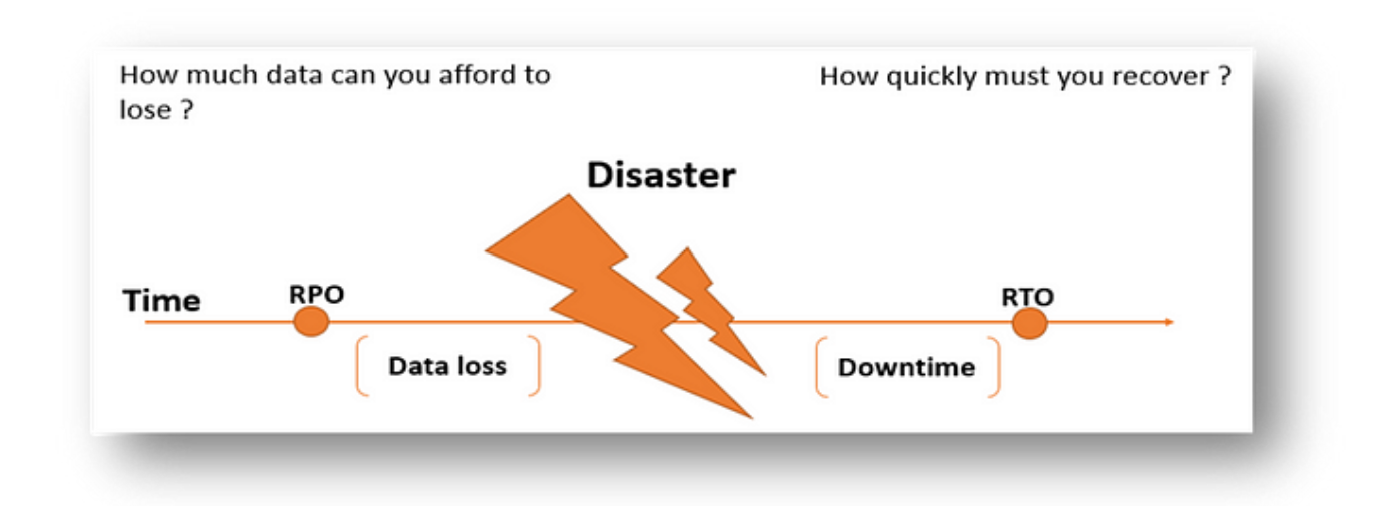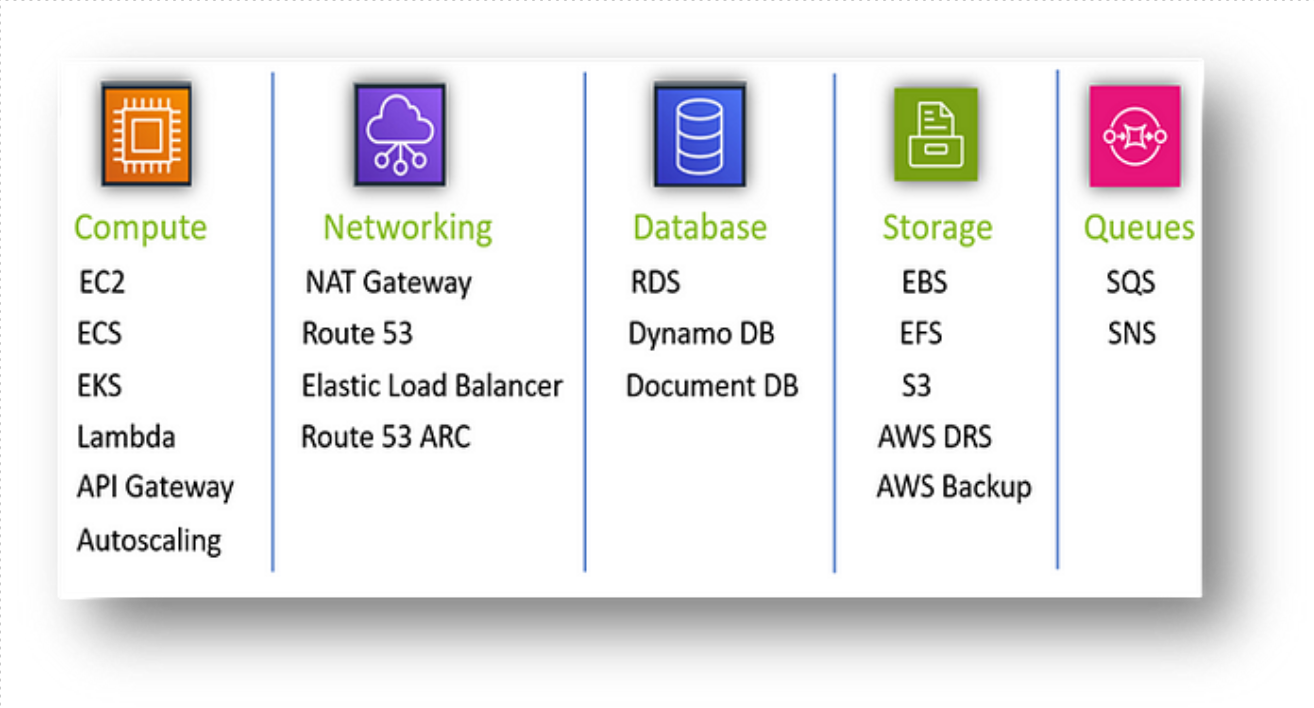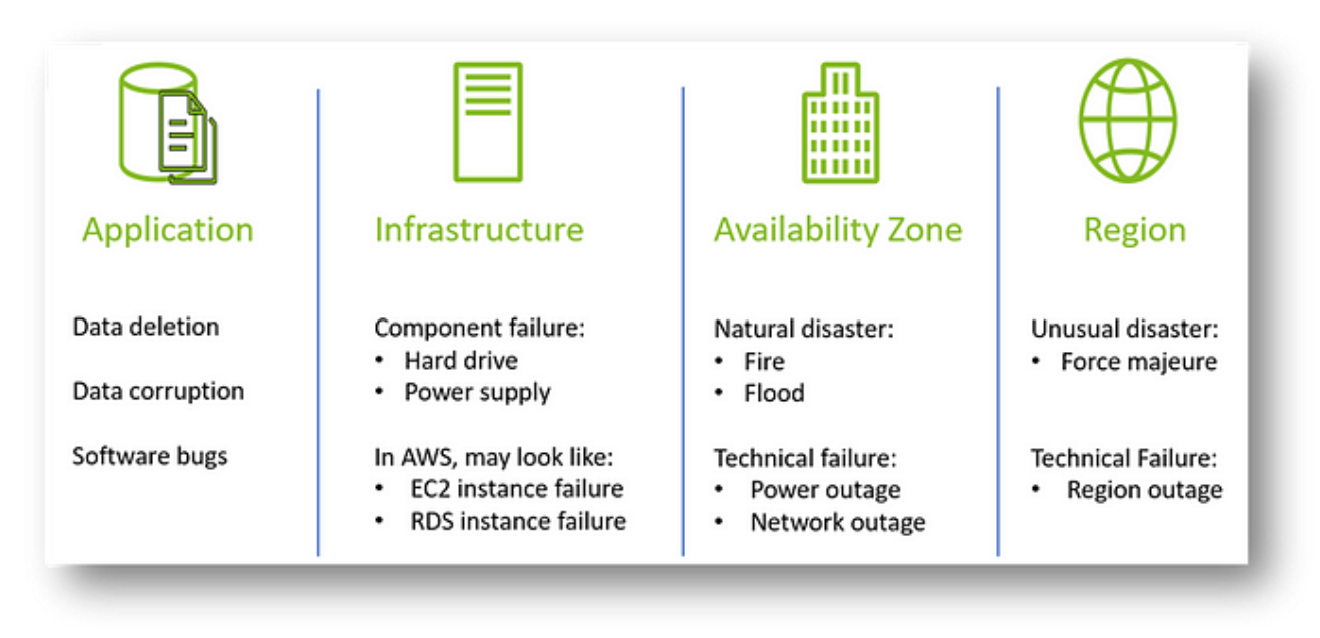Introducing AWS Resilience Hub:
AWS Resilience Hub offers a centralized platform for managing disaster recovery processes for EC2 and EKS applications. Automated tracking of RTO and RPO timings eliminates manual errors and provides real-time visibility into recovery performance. Flexible scheduling options enable organizations to conduct drills at their convenience, reducing disruption to regular operations.

Supported Resources:
AWS offers many services, but only a few are supported by Resiliency Hub now (as of June 05, 2023). Details of the supported resources are illustrated in below.

Disruption types — resiliency scores
AWS Resilience hub monitors infrastructure and applications through a ‘resiliency score’. This score reflects how closely the application follows AWS recommendations for meeting resiliency policy, alarms, SOPs, etc. This score is used as a metric by AWS Resiliency Hub to indicate the ability of an application to withstand disruption. Based on the type of resources each application uses, Resiliency Hub recommends alarms, and SOPs, for each disruption type.

How AWS Resilience Hub Solves the Problem:
AWS Resilience Hub offers a centralized platform that revolutionizes disaster recovery processes by addressing these key challenges:
Automated Tracking of RTO and RPO: AWS Resilience Hub captures recovery metrics in real-time, eliminating the manual tracking errors that often occur during traditional drills. This automation ensures accurate measurement of RTO and RPO, providing organizations with precise data on their recovery performance.
Real-Time Insights and Visibility: With AWS Resilience Hub, organizations gain real-time visibility into their recovery processes. This continuous monitoring allows for proactive identification of resilience gaps and facilitates timely optimization of recovery strategies, ensuring that businesses can address potential issues before they become critical.
Flexible Scheduling for Drills: Unlike bi-annual drills that can disrupt regular operations, AWS Resilience Hub offers flexible scheduling options. Organizations can conduct drills at their convenience, reducing disruption and enabling more frequent testing of their disaster recovery plans. This flexibility leads to more robust and continuously updated resilience strategies.
Customizable Drill Scenarios: AWS Resilience Hub allows organizations to simulate a variety of disaster scenarios, such as instance failure, CPU stress, AZ power interruption, EKS cluster node failure, and network partitioning. These customizable scenarios ensure comprehensive testing of recovery strategies, helping organizations refine their plans based on real-world conditions.
Seamless Integration with AWS Services: Integration with AWS services such as AWS CloudFormation, AWS Systems Manager, and AWS Lambda streamlines the deployment and management of disaster recovery solutions. This seamless integration ensures that recovery processes are efficient, reliable, and aligned with the organization’s overall cloud infrastructure.
Resilience Testing and Experiments:
To ensure comprehensive disaster recovery, it is essential to conduct resilience testing and experiments. AWS Resilience Hub supports a variety of tests, including:
- Instance Failure: Simulate the failure of EC2 instances to test the auto-recovery features and the effectiveness of your backup and recovery processes.
- CPU Stress: Induce high CPU stress on EC2 instances to evaluate their performance under heavy load and ensure applications can handle unexpected spikes in demand.
- Availability Zone (AZ) Power Interruption: Test the availability and failover mechanisms by simulating a power interruption in an AZ, ensuring applications can seamlessly transition to another AZ without downtime.
- EKS Cluster Node Failure: Simulate the failure of one or more nodes in EKS cluster to test the robustness of containerized applications and their ability to recover swiftly.
Enhancing Resilience in Outages
Application Component Failures: AWS Resilience Hub helps simulate application component failures to ensure that individual parts of an application can fail without bringing down the entire system. This ensures that applications are designed with fault tolerance and high availability in mind.
Infrastructure Component Failures: Simulating infrastructure component failures, such as database or storage failures, helps in validating the robustness of infrastructure services and ensures that failover mechanisms are effective and efficient.
Regional Outages: AWS Resilience Hub enables testing of regional outages, ensuring that applications can withstand the failure of an entire AWS region. This is crucial for businesses that require high availability and geographical redundancy.
High Availability (HA) Components: By testing HA components, organizations can validate that load balancers, auto-scaling groups, and multi-AZ deployments function correctly under failure conditions, ensuring continuous availability of services.
Business Value
Enhanced Resilience: AWS Resilience Hub provides businesses with the tools and insights to enhance their resilience against various types of failures, ensuring minimal downtime and data loss.
Improved Efficiency: Automating disaster recovery processes and reducing the need for manual intervention improve operational efficiency and reduce the risk of human error.
Cost Savings: By reducing the frequency and impact of outages, AWS Resilience Hub helps businesses save costs associated with downtime and recovery efforts.
SLA & OLA
Service Level Agreements (SLA): AWS Resilience Hub helps organizations meet their SLAs by providing the tools and insights needed to ensure high availability and quick recovery times.
Operational Level Agreements (OLA): By providing real-time visibility and automated tracking of recovery metrics, AWS Resilience Hub supports organizations in meeting their OLAs, ensuring that internal processes and recovery strategies are aligned with business objectives.
Best Practices for Leveraging AWS Resilience Hub:
Conduct regular drills: Instead of bi-annual drills, consider conducting more frequent, smaller-scale drills to continuously validate and improve resilience strategies.
Collaborate across teams: Involve stakeholders from different departments to ensure alignment and readiness in the event of a disaster.
Monitor and optimize: Use the insights provided by AWS Resilience Hub to continuously monitor and optimize recovery processes, keeping them aligned with evolving business needs and industry best practices.
Conclusion:
AWS Resilience Hub for EC2 applications offers a paradigm shift in disaster recovery strategy, enabling organizations to enhance resilience, minimize downtime, and optimize recovery efforts. By automating manual processes, providing real-time insights, and offering seamless integration with AWS services, it empowers businesses to stay resilient in the face of unforeseen challenges. Embracing best practices and leveraging the full capabilities of AWS Resilience Hub will be crucial in building a robust and future-ready disaster recovery framework.
Ready to revolutionize your disaster recovery? Contact us today to learn how AWS Resilience Hub can enhance your EC2 and EKS applications’ resilience. Let’s build a stronger future together.

